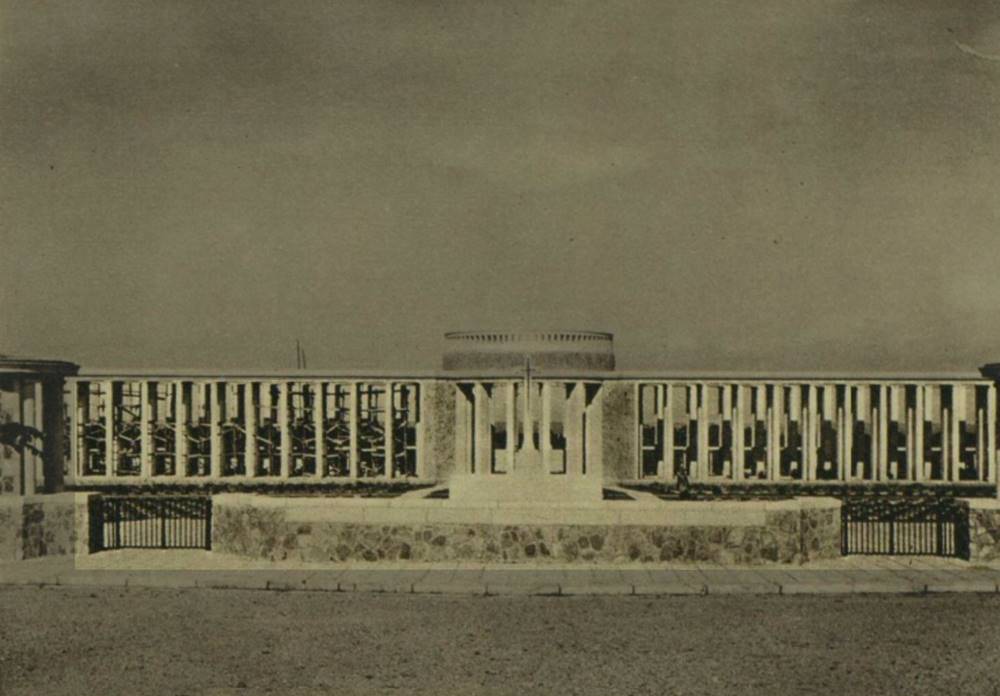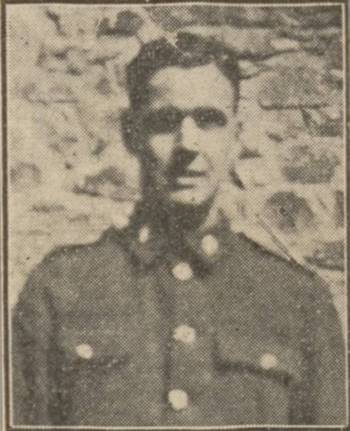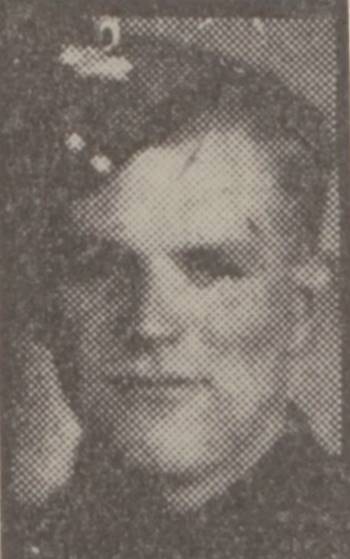This article looks at the Rangoon Memorial which commemorates nearly 27,000 British and Commonwealth personnel who died during the Burma Campaign. As well as providing a history of the memorial, this page will show you how to research soldiers of the British Army it commemorates. This is just one of a series of articles I’ve written to help you research soldiers who served with the British Army during the Second World War:
I also offer a Second World War Soldier Research and Document Copying Service.
The Rangoon Memorial

The Rangoon Memorial commemorates nearly 27,000 British and Commonwealth service personnel who died during the Burma Campaign in the Second World War and have no known graves. These soldiers died in Burma, now Myanmar and India during the campaign which lasted between December 1941 and September 1945. A small number of soldiers are commemorated on the memorial who died prior to December 1941 and the latest deaths commemorated are from February 1946. There are also hundreds of soldiers commemorated on the memorial whose date of death isn’t known. The Rangoon Memorial was unveiled by General Sir Francis Festing, who commanded the 36th Indian Division during the campaign, on 9 February 1958. A freeze on the memorial recorded:
1939-1945
Here are Recorded The Names Of Twenty-Seven Thousand Soldiers
Of Many Races United in Service To The British Crown
Who Gave Their Lives In Burma And Assam But To Whom The Fortune Of War
Denied The Customary Rites Accorded To Their Comrades In Death
Of those commemorated on the memorial, 7,166 died serving with the British or Burma Armies or were from West Africa, primary men serving with the 81st and 82nd (West Africa) Divisions. There are also 19,640 soldiers commemorated from the Indian Army. Some of these soldiers would have been cremated, in accordance with the religious customs of Sikhs and Hindus which is why they have no known grave. Near the Rangoon Memorial is the Taukkyan Cremation Memorial for Sikhs and Hindus who were known to have been cremated. Forty-six South Africans are also commemorated on the memorial, along with two Australians and a Canadian, Captain Jean Paul Archambault. The Rangoon Memorial is located in the Taukkyan War Cemetery, in Taukkyan, a town in Myanmar, located fifteen miles north of Yangon, formerly Rangoon. Also located in the cemetery is the Taukkyan Cremation Memorial and Taukkyan Memorial. The Rangoon Memorial is open daily between 07:00 and 17:00.
Researching a British Soldier Commemorated on the Rangoon Memorial
This section will help you research British soldiers commemorated on the Rangoon Memorial. There are eight sections but only those on using the Commonwealth War Graves Commission and unit war diaries are relevant to Burmese, Indian and West African soldiers. The first four research suggestions are the easiest to conduct, though two will require you to sign up to Findmypast which offers a free trial. The next four will take more time and three of them involve visiting the National Archives or British Library in London. However, it is at the National Archives that you have the best chance of discovering the circumstances of a soldier’s death. I offer a document copying service at both the British Library and the National Archives.
-
- Look for their entry on the Commonwealth War Graves Commission’s website
- Find their entry/entries in the War Office Casualty Lists
- Search the British Newspaper Archive
- Research the unit they served with using online resources or regimental/unit histories
-
- Order a copy of a soldier’s service record
- Look at the unit war diary covering the date of their death
- If a soldier was reported missing first check WO 361: Enquiries into Missing Personnel, 1939-1945
- Look at newspapers at the British Library for a report of a soldier’s death
Using the Commonwealth War Graves Commission’s Website
All soldiers commemorated on the Rangoon Memorial will have an entry in the Commonwealth War Graves Commission’s database which can be searched online. The amount of information will vary but will usually include a soldier’s name, number, rank, the corps or regiment they were serving in when they died, often their exact unit, date of death and which panel of the memorial they can be found on. Other information may include their age, any honours and awards and their next of kin. If you click on the “Cemetery or Memorial” tab, in the additional fields section, you can narrow your search to just the Rangoon Memorial by entering its name. The following are three typical entries:
- N/14600 Private Angon Egima 7th Battalion King’s African Rifles. Date of Death: 9 February 1945. Commemorated on Face 101.
- 14370333 Private Robert Rennie 2nd Battalion The Border Regiment. Date of Death: 11 March 1944 aged 34. Husband of Kathleen Rennie, of West Hartlepool, County Durham. Commemorated on Face 14.
- 14704 Sepoy Amanat Ali Shah 1st Battalion 9th Jat Regiment. Date of Death: 22 February 1942 aged 20. Son of Mitha Shah, of Potha, Poonch, Kashmir. Commemorated on Face 38.
You can also use the Commonwealth War Graves Commission to check how many soldiers from a unit died on a particular day by selecting “Date of Death” from the Additional Fields section.
Searching the War Office Casualty Lists
Once you know a soldier’s number, you can search for them in the War Office casualty lists available on Findmypast. These only cover the British Army. If a soldier served as an officer, then they will have a personal number and if they served in the ranks they had an army number. These numbers were unique. The casualty lists will record whether a soldier was killed in action, died of wounds, died of disease or in an accident or was reported missing and later confirmed dead. Though you’ll have to turn to a soldier’s service record or the unit war diary to find out more information regarding the circumstances of their death. If a soldier was reported missing, then it is highly likely that they may appear in the relevant file in WO 361: Enquiries into Missing Personnel, 1939-1945. These documents are discussed below. Also, if a soldier was reported missing, then there may be more than one newspaper report regarding them in their local newspapers. For example, a first report regarding them going missing and a subsequent report confirming their death.
Searching the British Newspaper Archive
The British Newspaper Archive is a good resource to search if you’re looking for a photograph of a soldier. Only a fraction of the newspapers covering the Second World War have been digitized but it’s being continuously updated. The following two photographs of soldiers commemorated on the memorial are typical of the type published in newspapers of the period. They often provide information regarding a soldier’s background and service. There may also be an account of the circumstances of their death. Trooper Ronald Francis Moore is shown below who was reported missing believed killed on 18 April 1944 while serving with the 45th Recce Regiment. This photograph was published in The North Devon Journal Herald on 1 June 1944 under the heading “Missing in Burma”.

Private Frederick Turner was reported missing on 9 March 1944 while serving with the 13th Battalion The King’s Regiment (Liverpool). This photograph was published in the Devon and Exeter Gazette on 21 July 1944 under the header “Missing in Burma Still no News of Kenton Soldier”
Using Online Sources and Regimental/Unit Histories
There are vast amounts of information online regarding the Burma Campaign online which will be very useful for adding context. The Burma Star Memorial is a good resource. However, unless you are researching a soldier killed with an infantry unit, then you’re unlikely to find a lot of information. Regimental histories can be very useful and some have been reprinted. However, they may only provide scant coverage of the period a soldier died, especially if they weren’t killed in a large engagement. For example, if a soldier was the only man killed on a patrol or by a boobytrap then they won’t usually appear in a regimental history unless they were an officer. A unit’s war diary, discussed below, is usually the key resource. A book I recommend for those interested in the Burma Campaign is Quartered Safe Out Here by George MacDonald Fraser.
Ordering a Copy of a Soldier’s Service Record
A soldier’s service record probably won’t provide you with any information regarding the circumstances of their death but can be very useful in other aspects. They are held by the Ministry of Defence and National Archives. As the soldiers on the Rangoon Memorial died in service, you don’t need to provide a death certificate when ordering a copy or have the permission of their next of kin. Unfortunately, the Ministry of Defence and National Archives don’t currently release medical records, so if you’re researching a soldier who died of disease they are unlikely to provide the reason. A service record will usually provide you with a complete list of units a soldier served with and when, allowing their movements to be traced in detail. If a soldier died of wounds, the date they were wounded should appear in their record.
Using Unit War Diaries
A war diary was written by an officer of a unit and recorded its location and activities. They often contain appendices in the form of orders, battle reports, maps etc. War diaries will be your primary source of information if you want to find out where and in what circumstances a soldier died. Though their level of detail varies and they may not record a soldier’s death. They are held at the National Archives in London and I offer a document copying service for them. The war diaries covering the Burma Campaign can be found in WO 172: British and Allied Land Forces, South East Asia and WO 177: Army Medical Services. Burmese, Indian and West African unit war diaries can also be found in WO 172. Some Indian Army war diaries are also held by the National Archives of India. The extract below was taken from the war diary of the 2nd Battalion The Welch Regiment and records the circumstances which led to the death of Private John Preece. He is commemorated on Face 14 of the Rangoon Memorial:
15 November 1944: The move to Sittaung from Mile 8 was carried out by night in short stages. The track was in a very bad state after the rains with steep gradients and several stretches were not jeepable. Divisional sappers had the task of making the road fit for mechanical transport. At milestone 16 an unfortunate incident occurred; a soldier of B Company No. 14404140 Private Preece ventured outside the perimeter at night after stand down and on return failed to answer the challenge of the perimeter sentry. He was shot and killed and was buried by our padre the Reverend Hodge at Mile 16 the following day.
Enquiries into Missing Personnel, 1939-1945
An important source of information, especially if you’re researching a missing soldier is WO 361: Enquiries into Missing Personnel, 1939-1945 held at the National Archives. I offer a copying service for these documents. They often contain eyewitness accounts of the circumstances in which a soldier was last seen. There will often be multiple files for regiments or corps covering each theatre of war they served in. Those covering the Burma Campaign will have Burma in the title. Also, the company or section a soldier was serving in when they went missing was often recorded. The following is a statement made by 3387759 Corporal R. Pickup regarding the circumstances in which Corporal Birch and Fusilier Thomas Graham of the 1st Battalion The Lancashire Fusiliers went missing. It is a typical example of the kind of statements found in the WO 361 files. Fusilier Graham is commemorated of Face 9 of the Rangoon Memorial:
On the 11th April 1944 I was with a party of sick men of whom Fusilier Graham was a member and we were proceeding to the roadblock at Henu. We went into bivouac and were awaiting a patrol from Henu to guide us in when we were fired on and the party scattered.
I saw Fusilier Graham making his way with Corporal Birch towards the river alongside the Railway; they crossed the railway and went across a paddy and out of my sight. About five minutes later I heard firing taking place in the area in which they had just gone. I remained near the bivouac area for the next 14 hours, but did not see Fusilier Graham or Corporal Birch again. The last time I saw Fusilier Graham & Corporal Birch was at approx. 12:00 hours on the 11th April 1944.
Viewing Newspapers at the British Library
Newspapers often reported if a local soldier became a casualty and many published photographs of them. The British Library has the best collection of British newspapers in the world. Unfortunately, only a small number have been digitized but the rest can be viewed at the British Library in London or its Boston Spa site. Newspapers will be available either as microfilm or as a hard copy. Microfilm copies can be ordered on the day at the British Library but hard copies needed to be ordered 48 hours in advance. You will need to sign up for a reader’s ticket to access the newspapers. If you’re researching a soldier who was reported missing in action and was later confirmed killed, there may be two newspaper reports. To find out which newspapers are available, search the city/town/county where the soldier was from on the British Library’s catalogue. Then on the left-hand side under “Material Type” click newspapers. You’ll then have a list of all available newspapers covering that area.

